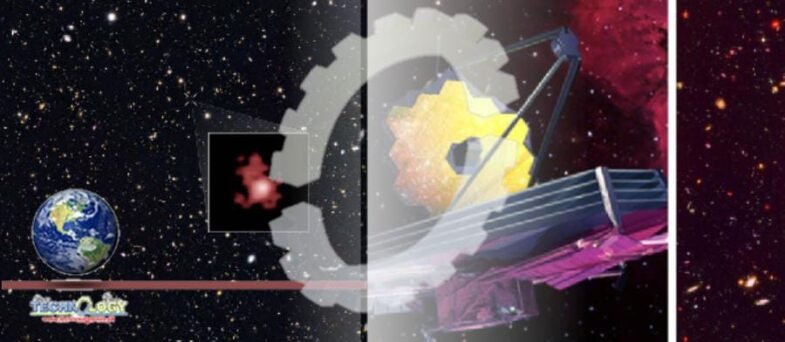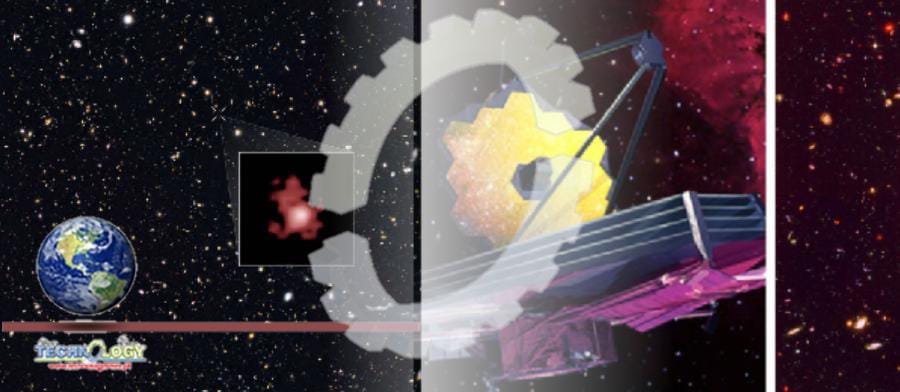There’s no denying it: The Hubble Space Telescope is one of the crowning achievements in our collective pursuit to learn more about space. Since NASA released the first Hubble image in 1990, the space telescope first dreamed up by Yale University astrophysicist Lyman Spitzer, Jr., in 1946 has been making history.

Hubble has substantially advanced our knowledge about other solar systems, alien worlds, and more. Hubble’s defining photos have laid the groundwork for a new chapter of space exploration set to begin this summer.That defining work is the Hubble Deep Field Image represents a collection of 342 different exposures of one of the darkest areas of space. The photos were all taken between December 18 and 28, 1995.Hubble’s cameras revealed myriad ancient galaxies in the seeming void of space. Some estimates number them to be around 10,000. Together they form a broad spectrum of ages, shapes, colors, and sizes. When scientists released it to the public, it took the world by storm — we were looking at the way the universe looked 13 billion years ago.Apple’s new privacy policy is finally coming to 5G with a new iPhone SE.A few years later, this feat was surpassed by Hubble’s Ultra-Deep Field image from the early 2000s.But with the James Webb Space Telescope approaching full alignment of its golden-coated mirrors, Hubble’s contribution is about to be one-upped.
“This summer, Webb will start searching for galaxies in the distant universe,” explains L.Y. Aaron Yung, a postdoc of NASA’s Goddard Space Flight Center, in a NASA blog post. Webb will do more than look at the Hubble Deep Field: it will provide physical data of even more distant galaxies within the original shot — and help scientists model the structure of the very first galaxies to ever exist.Webb’s advanced evidence collection is a massive deal to astronomers and everybody who’s wondered how we got here. The Webb Telescope data will reveal the initial conditions of galaxy formation and everything we’ve ever known. Even how life-friendly solar systems.NASA declared Webb’s Near-Infrared Spectrograph (NIRSpec) “ready for its ride to space” in Kourou on November 11, 2021, an announcement that signaled the passing of the torch, even as the Webb telescope still rest on Earth, some 44 days before its launch.
The NIRSpec is a contribution from the European Space Agency (ESA) to Webb and a group of industrial companies in the E.U., like Airbus Defence and Space, in Germany. A few other components came from NASA — which means Hubble’s outstanding contribution to science will have been outdone only by the collective efforts of several countries’ greatest engineers, scientists, and industries.Nearly 10,000 galaxies as seen in the Hubble Ultra Deep Field, taken after the initial “Deep Field,” from September 24, 2003, to January 16, 2004. Source: NASA, ESA, and S. Beckwith (STScl) and the HUDF Team.According to NASA, the NIRSpec is the largest instrument onboard Webb at more than six feet across. It weighs around 485 pounds, and can NASA says it’s robust enough to withstand the rigors of space. It has already survived a rocket launch, of course. The instrument’s optical bench, in addition to most of its mirrors, comprises a rugged and stable ceramic material known as silicon carbide.
Now attached to Webb, in orbit of the second Lagrange point (L2) beyond the moon, NIRSpec will peer into the very early universe to detect properties of the faintest galaxies. It’ll accomplish this by splitting the infrared light from these unthinkably distant galaxies into varying infrared shades called spectra.This information will reveal to scientists precisely how distant the galaxies are, the kinds of stars that make them up, and — crucially — “the relative abundance of life-giving elements such as oxygen and carbon in their interstellar gas,” according to NASA statements.”Each spectrum is a small treasure trove of information that will help scientists understand how the first stars and galaxies formed when the universe was only a few hundred million years old!”
And when this summer arrives, that search for answers to how ancient galaxies formed will begin. Several surveys are awaiting their turn with Webb, including NGDEEP and PRIMER. Still, for surveys of the large-scale structure of the early universe, projects like COSMOS-Web will use inputs from simulations based on theory, and earlier simulations will drive the procedure for choosing the best observing strategies.One of these simulations of the cosmos has even matched the distribution of galaxies observed in Hubble’s Ultra-Deep Field — except there are way more galaxies predicted to be within sight of Webb’s magnificent instruments.”Webb will detect, for the first time in human history, galaxy populations forming shortly after the big bang, and theory is paving the way for the search,” says Yung. “In turn, Webb’s observations will refine our understanding of galaxies and the history of our universe.”
Encore, encore Hubble changed the way we see the universe, giving us a glimpse not only into the extremely distant universe but also the unimaginably old. But when the James Webb Space Telescope takes a look at Hubble’s crowning achievement, we’re going to see even further into the abyss — into the same conditions that allowed every galaxy, every star, every planet, and being, to exist.
Source:Interestingengineering
